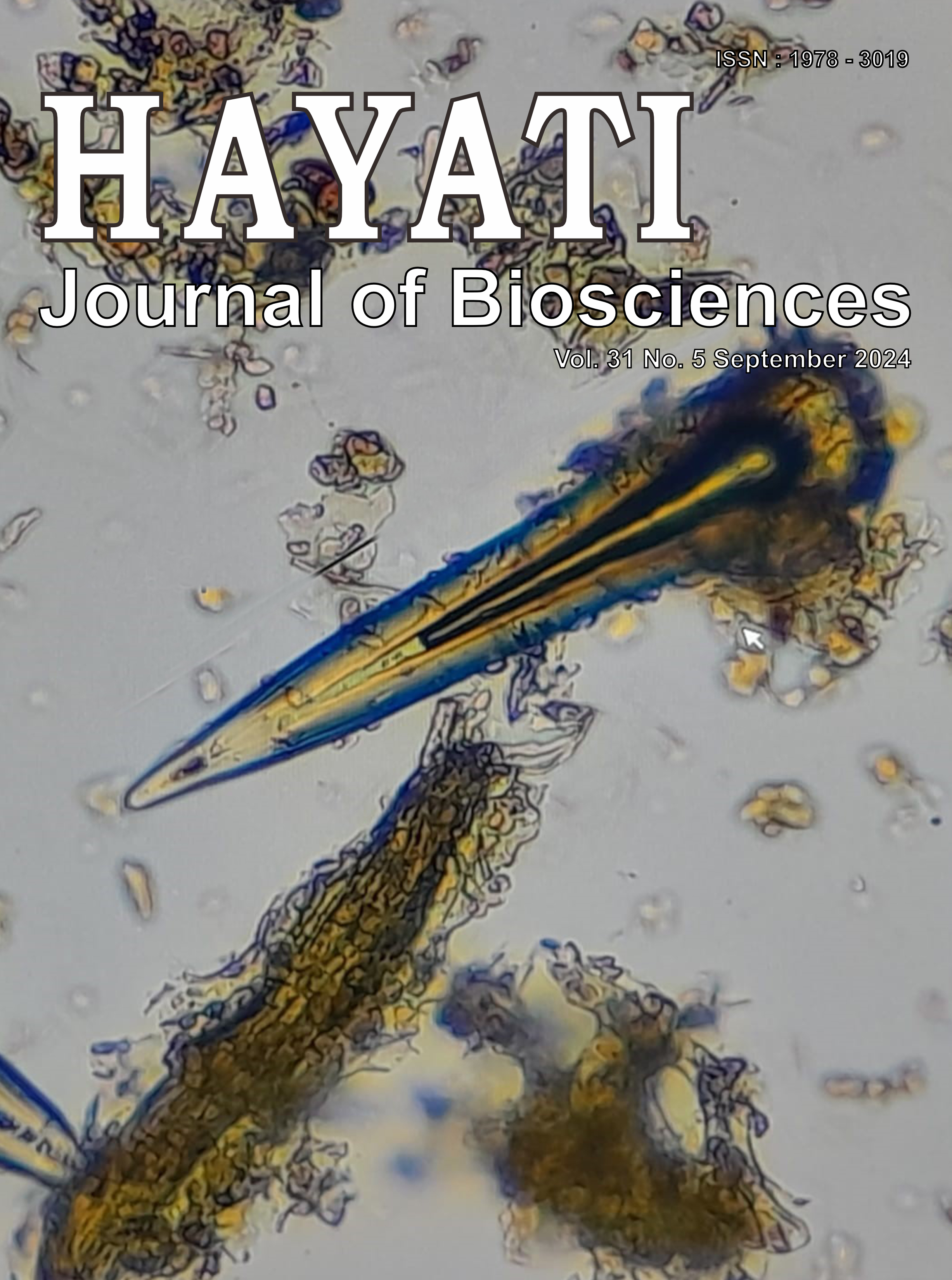Cloning, Expression, and Bioinformatics Modeling of Human Papillomavirus Type 52 L1/L2 Chimeric Protein in Escherichia coli BL21 (DE3)
Abstract
Human papillomavirus (HPV) L1 major capsid protein generates a highly immunogenic virus like particles (VLPs), which have been used as the main component of its prophylactic vaccine. However, the neutralizing antibodies against L1 VLPs are mostly type specific and may not be effective to prevent infection from different strains of HPV. On the other hand, HPV L2 minor capsid protein has low antigenic variation, thus can induce cross-neutralization. This study aims to obtain HPV 52 L1/L2 chimeric protein, which is designed based on HPV type 52 as one of the most circulated high-risk types in Indonesia, to develop a broad-spectrum HPV vaccine. Substitution of HPV 52 H4 helix L1 region with an HPV 52 L2 epitope was carried out using overlap extension PCR. HPV 52 L1/L2 chimeric gene was constructed into pET-SUMO expression vector and expressed in Escherichia coli BL21 (DE3). Bioinformatics modeling suggested that L2 epitope was located inside of the loop region in monomer form, and on the contrary, it was located outside of the pentamer surface. Furthermore, B cell and T cell epitopes predictions were conducted using Immune Epitope Database (IEDB) analysis. The B cell epitopes prediction revealed eleven potential epitopes, whereas the T cell epitopes prediction showed seven potential epitopes for each MHC class I and MHC class II. This study showed that HPV 52 L1/L2 chimeric protein has the potential to induce cross-neutralizing antibodies and can be developed as a promising candidate for a new HPV vaccine.
Downloads
Copyright (c) 2024 Muh. Chaeril Ikramullah, Apon Zaenal Mustopa, Tri Wibawa, Ai Hertati, Rifqiyah Nur Umami, Lita Tri Ratna, Shasmita Irawan, Moh Egy Rahman Firdaus, Huda Salahudin Darusman

This work is licensed under a Creative Commons Attribution-NonCommercial 4.0 International License.
HAYATI J Biosci is an open access journal and the article's license is CC-BY-NC. This license lets others distribute, remix, tweak, and build upon author's work, as long as they credit the original creation. Authors retain copyright and grant the journal/publisher non exclusive publishing rights with the work simultaneously licensed under a https://creativecommons.org/

























.png) IPB University
IPB University Department of Biology
Department of Biology The Indonesian Biological Society
The Indonesian Biological Society 

